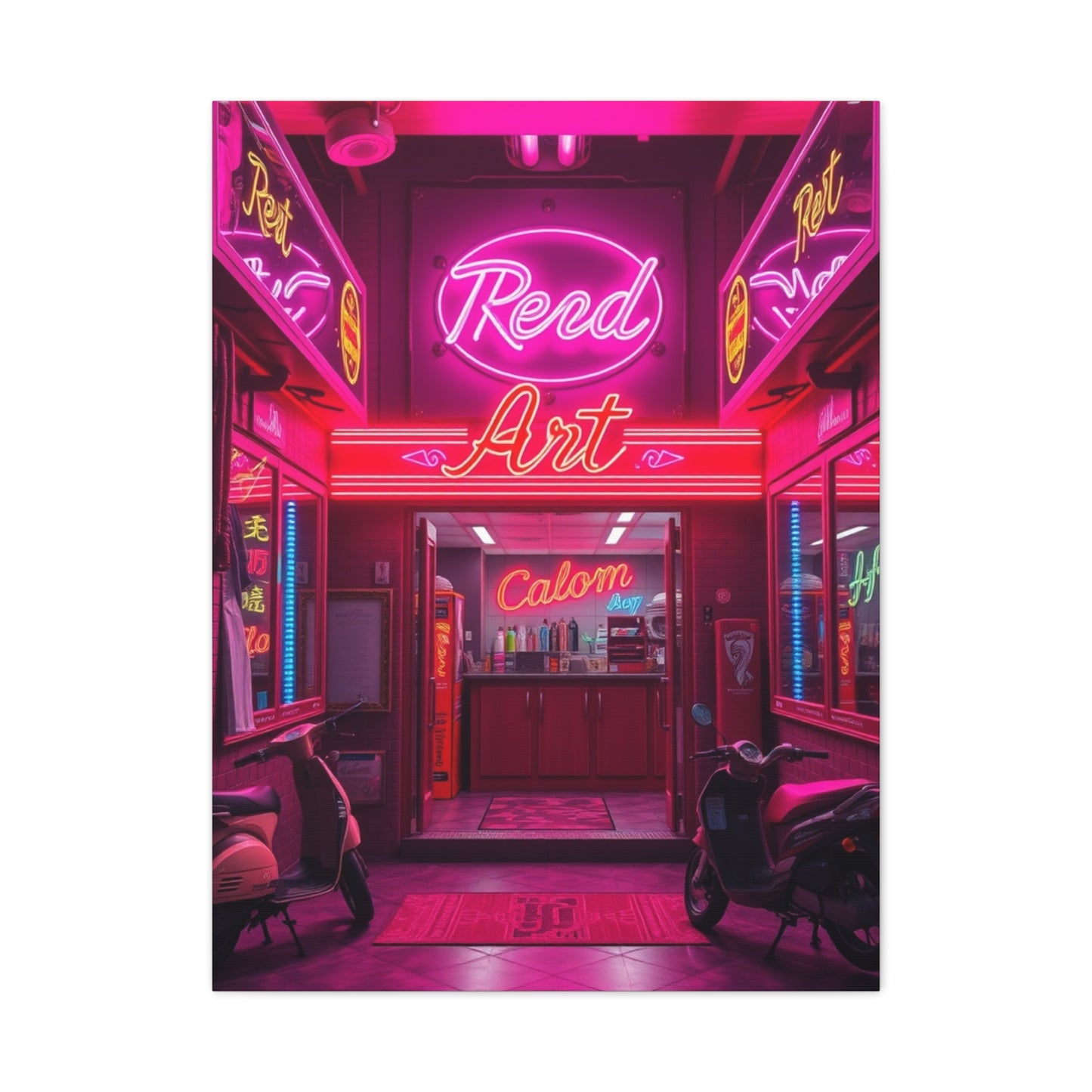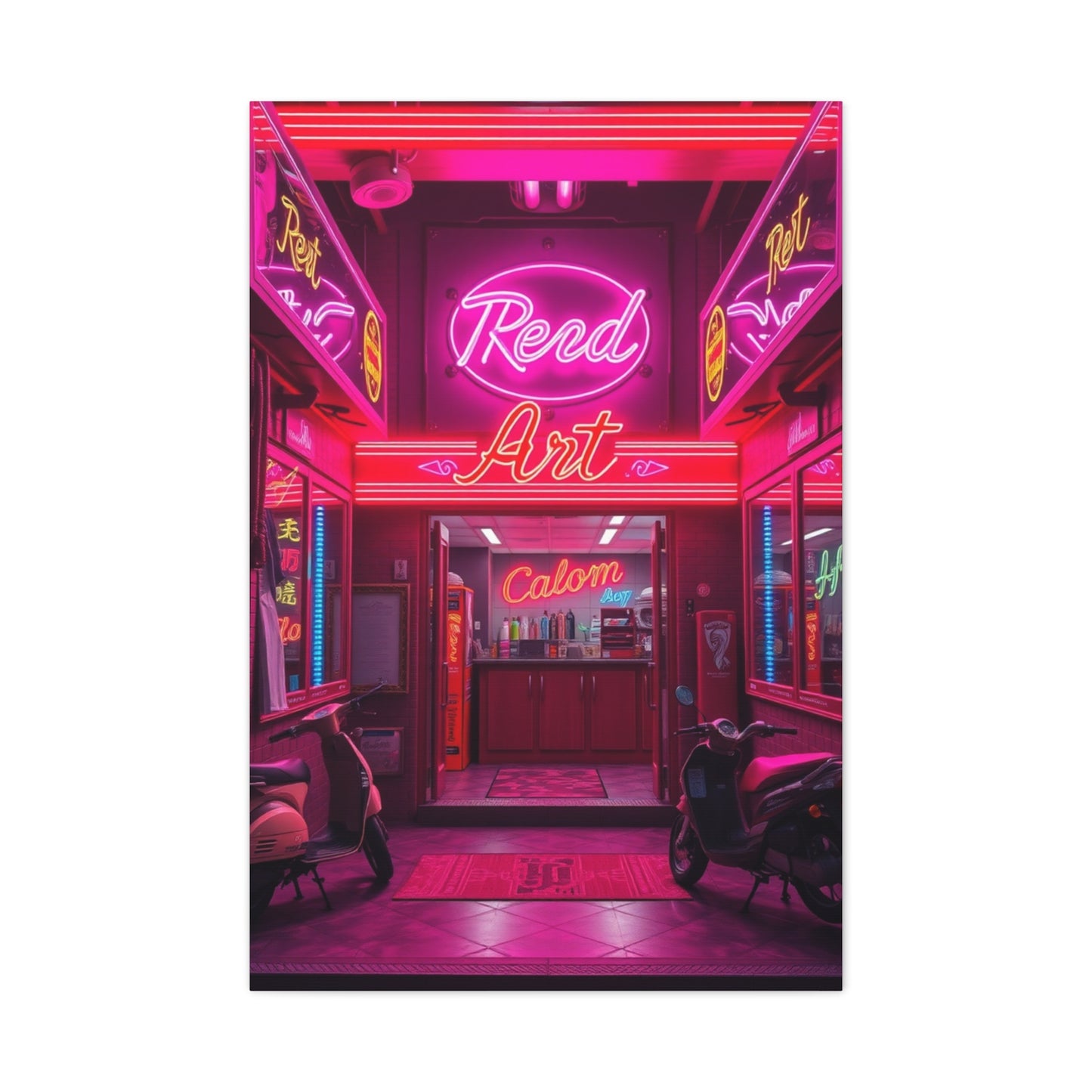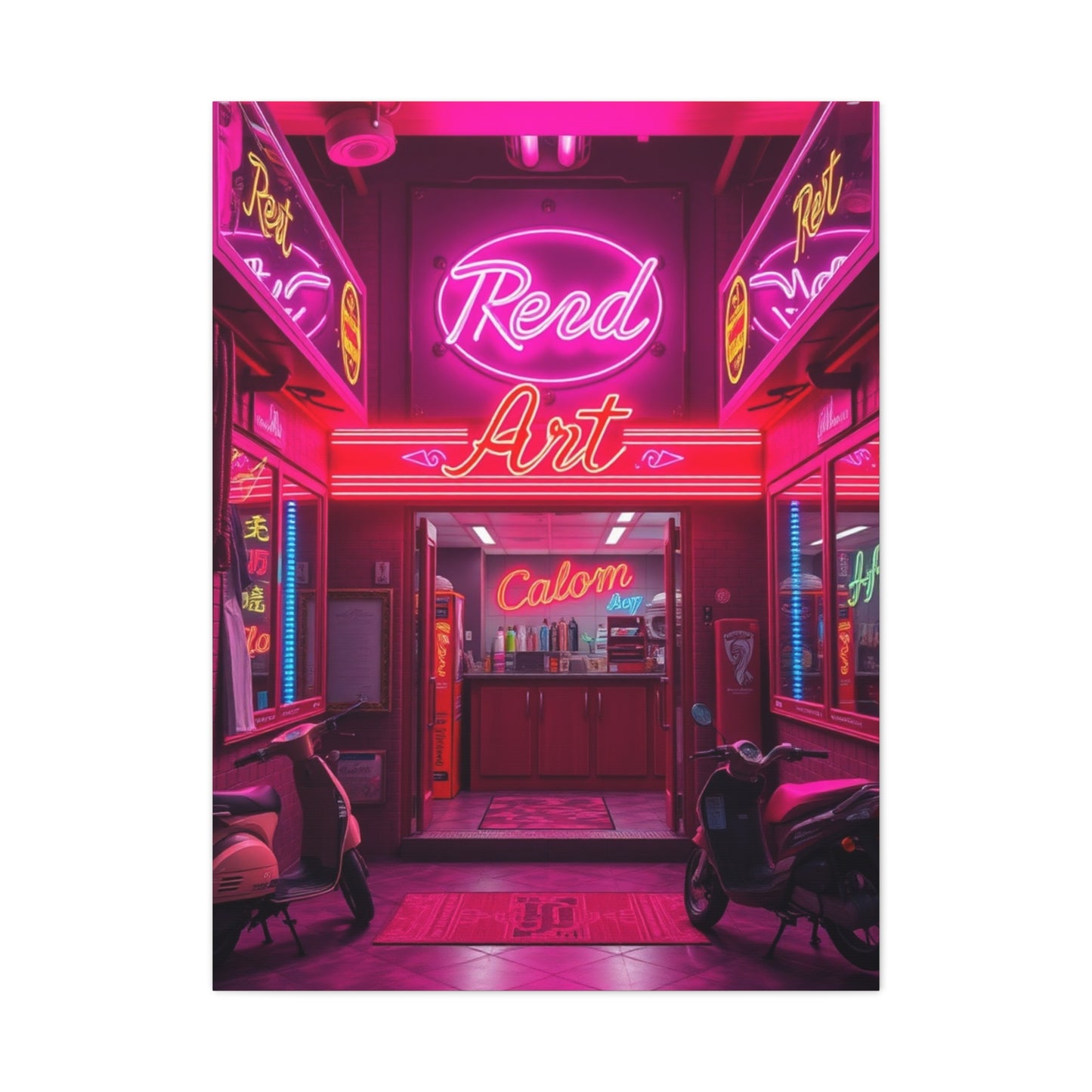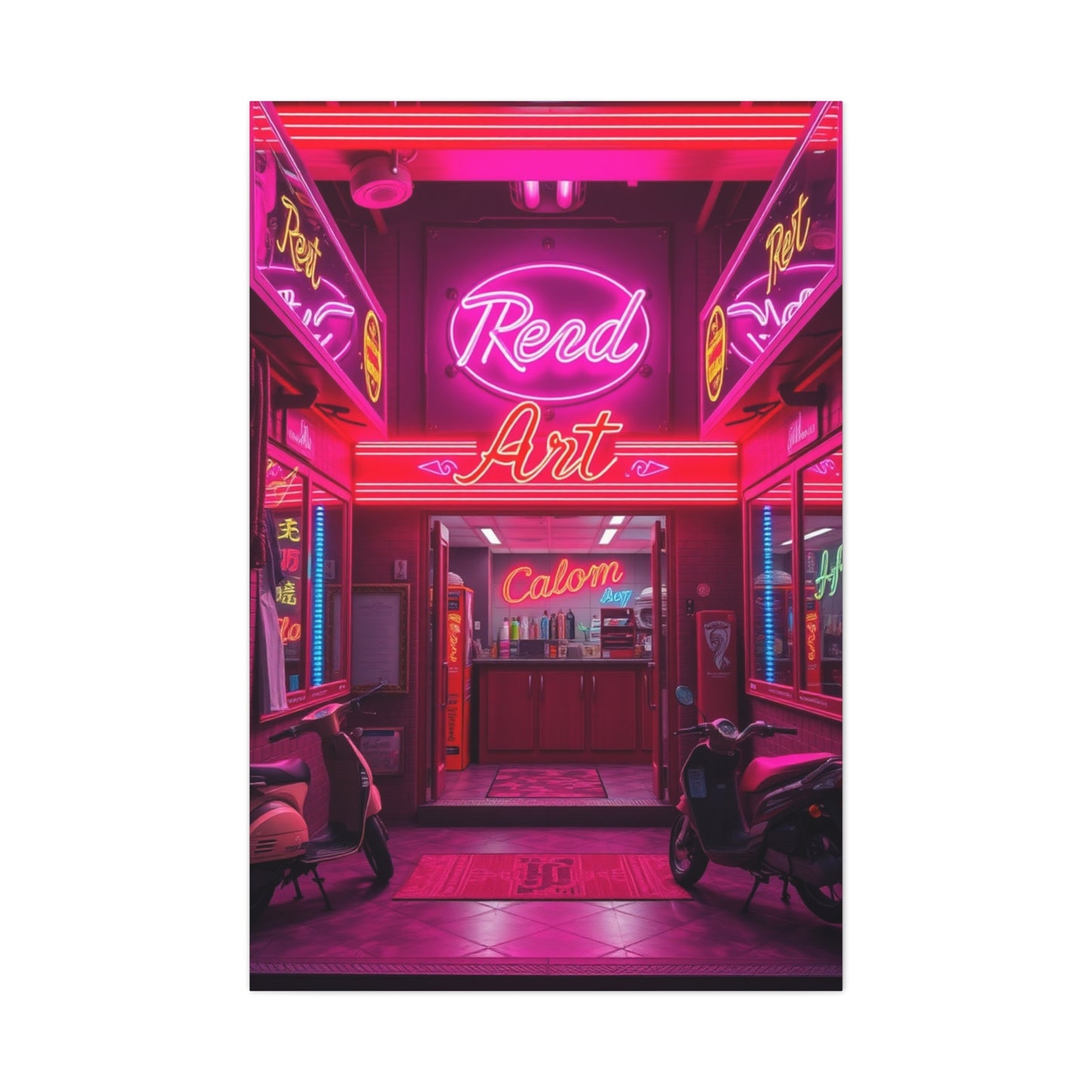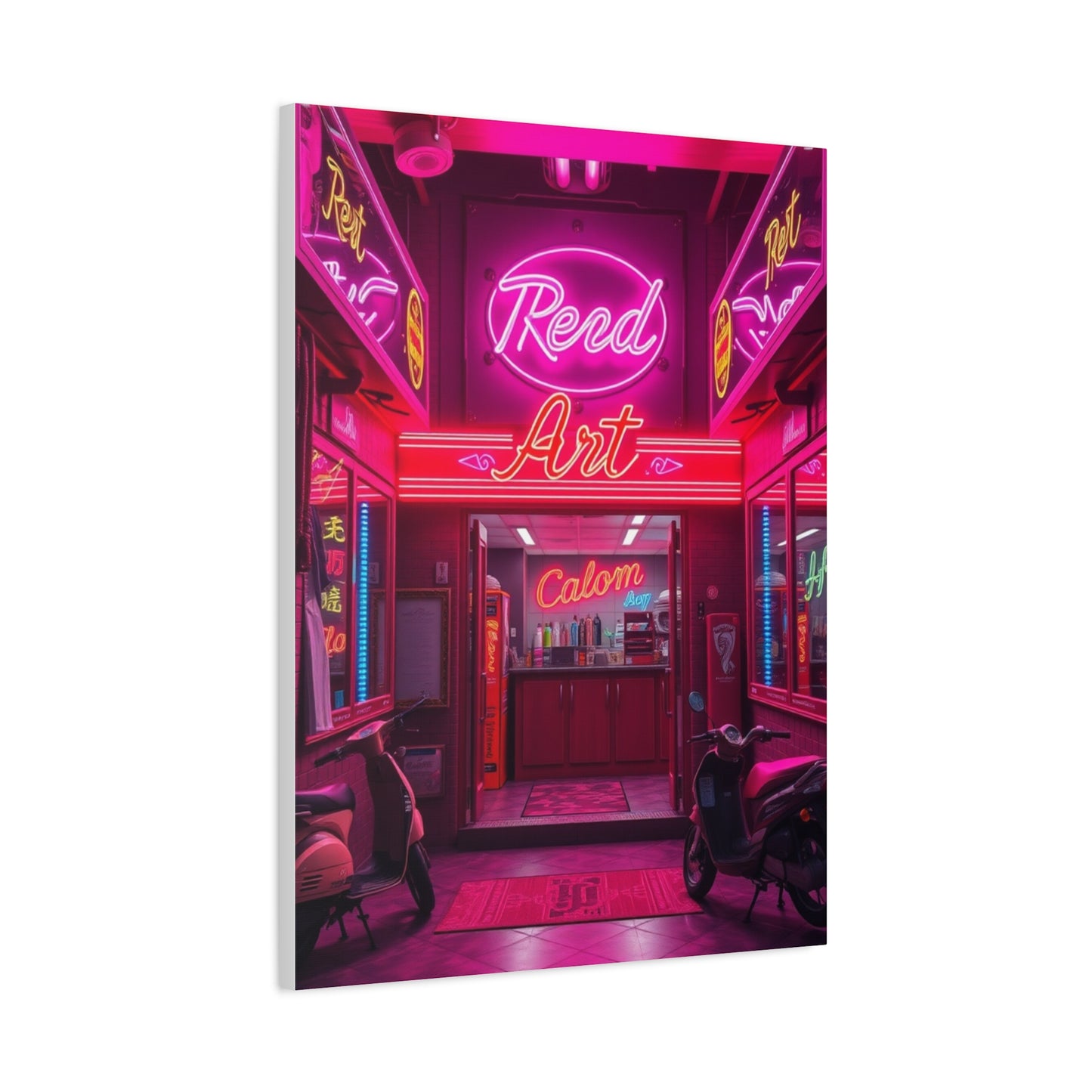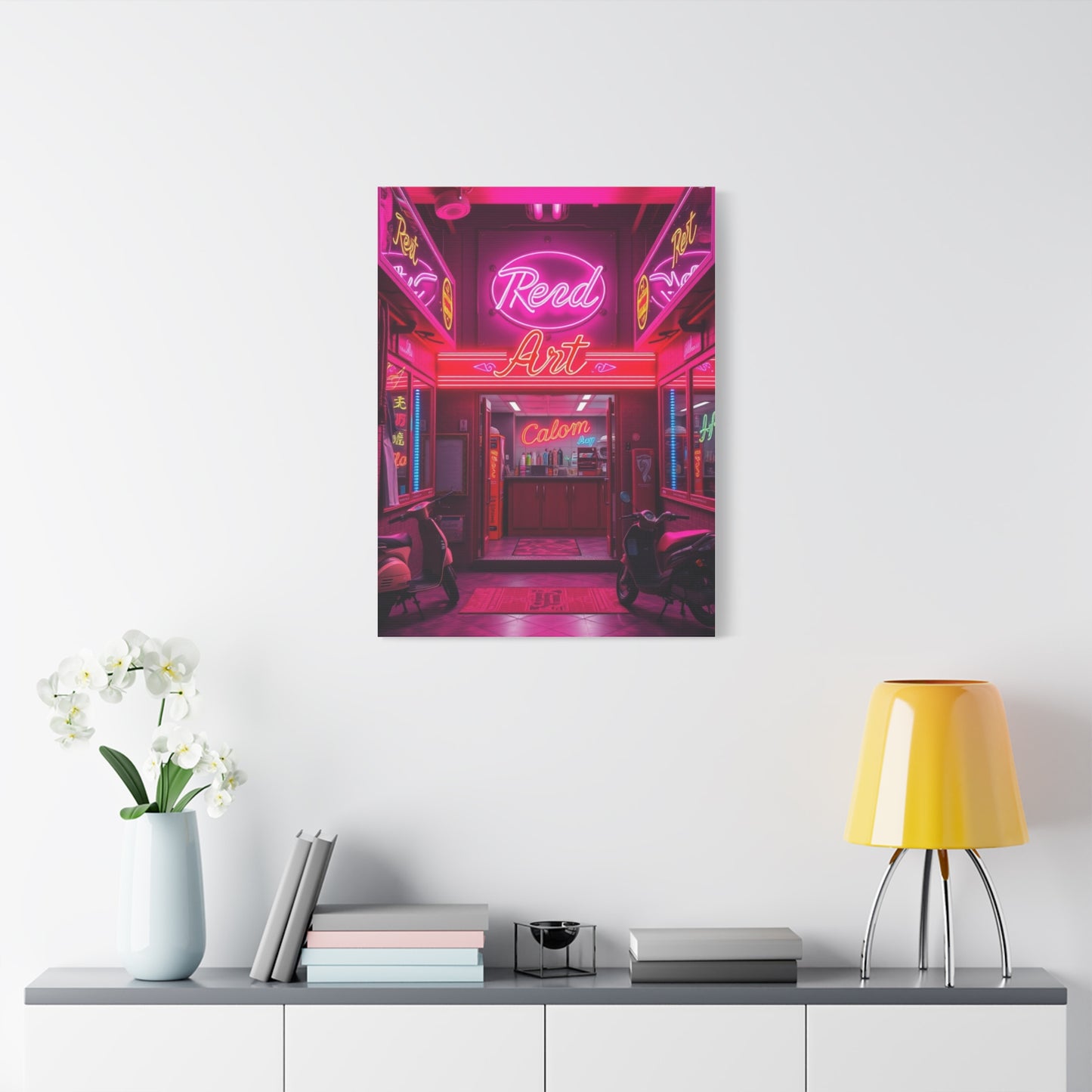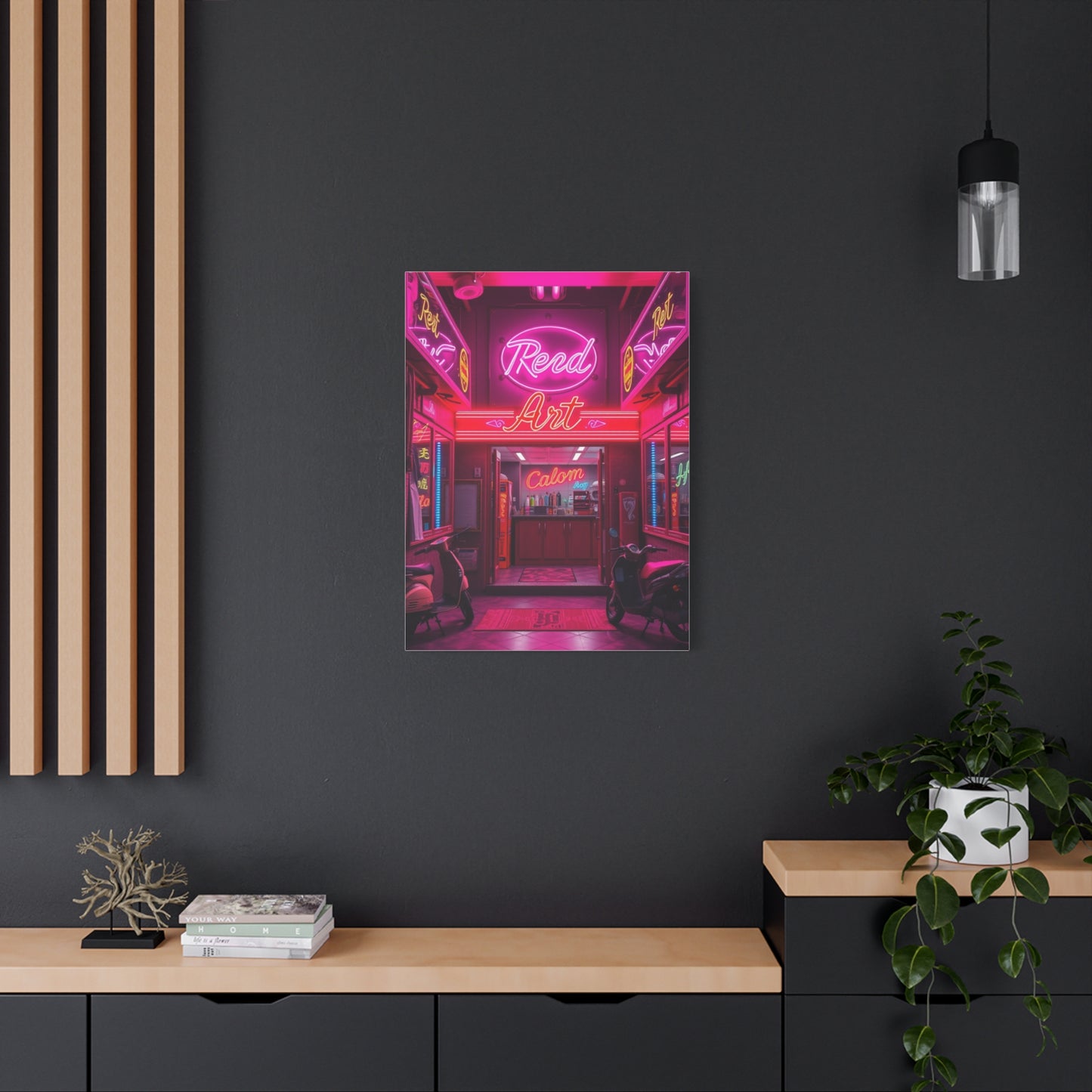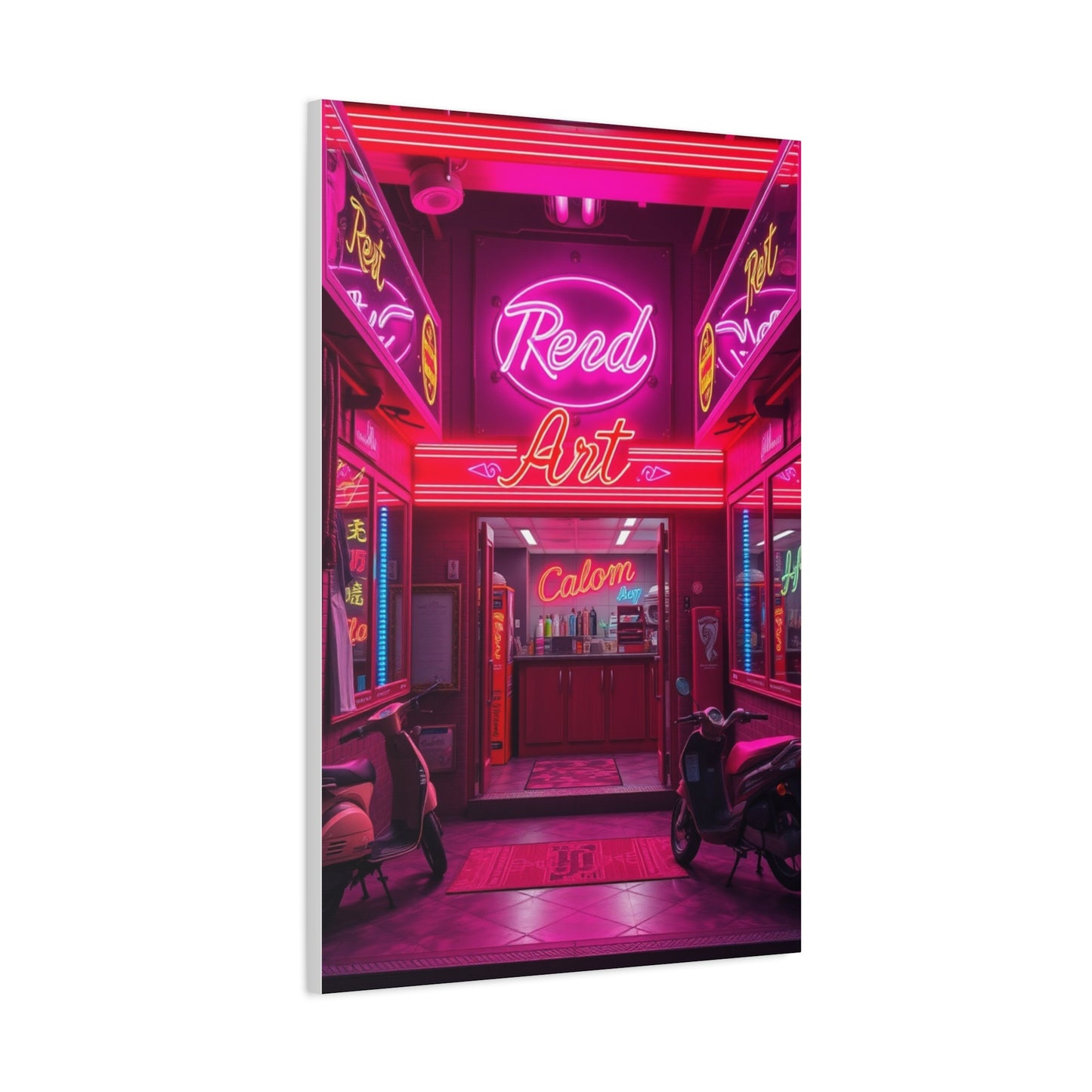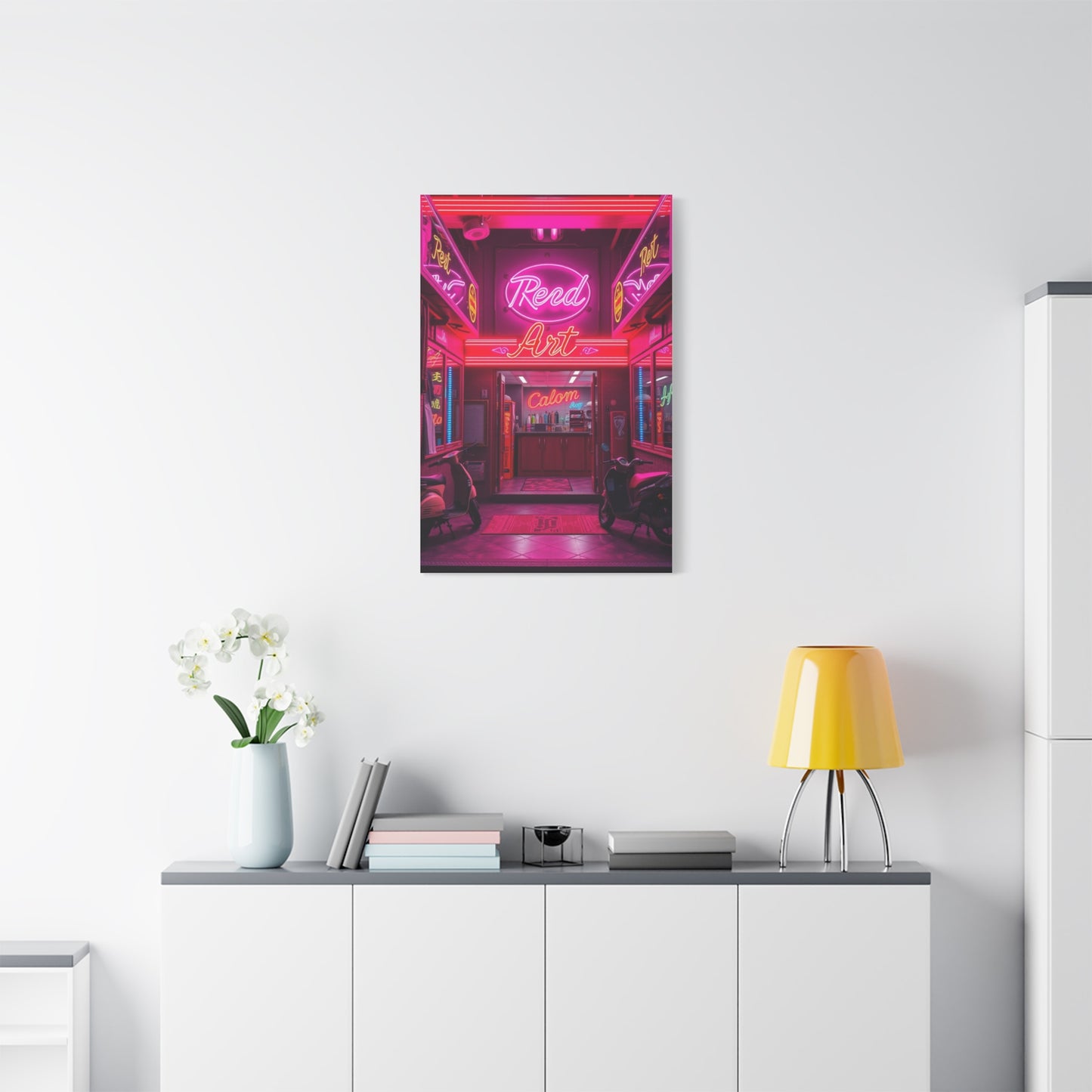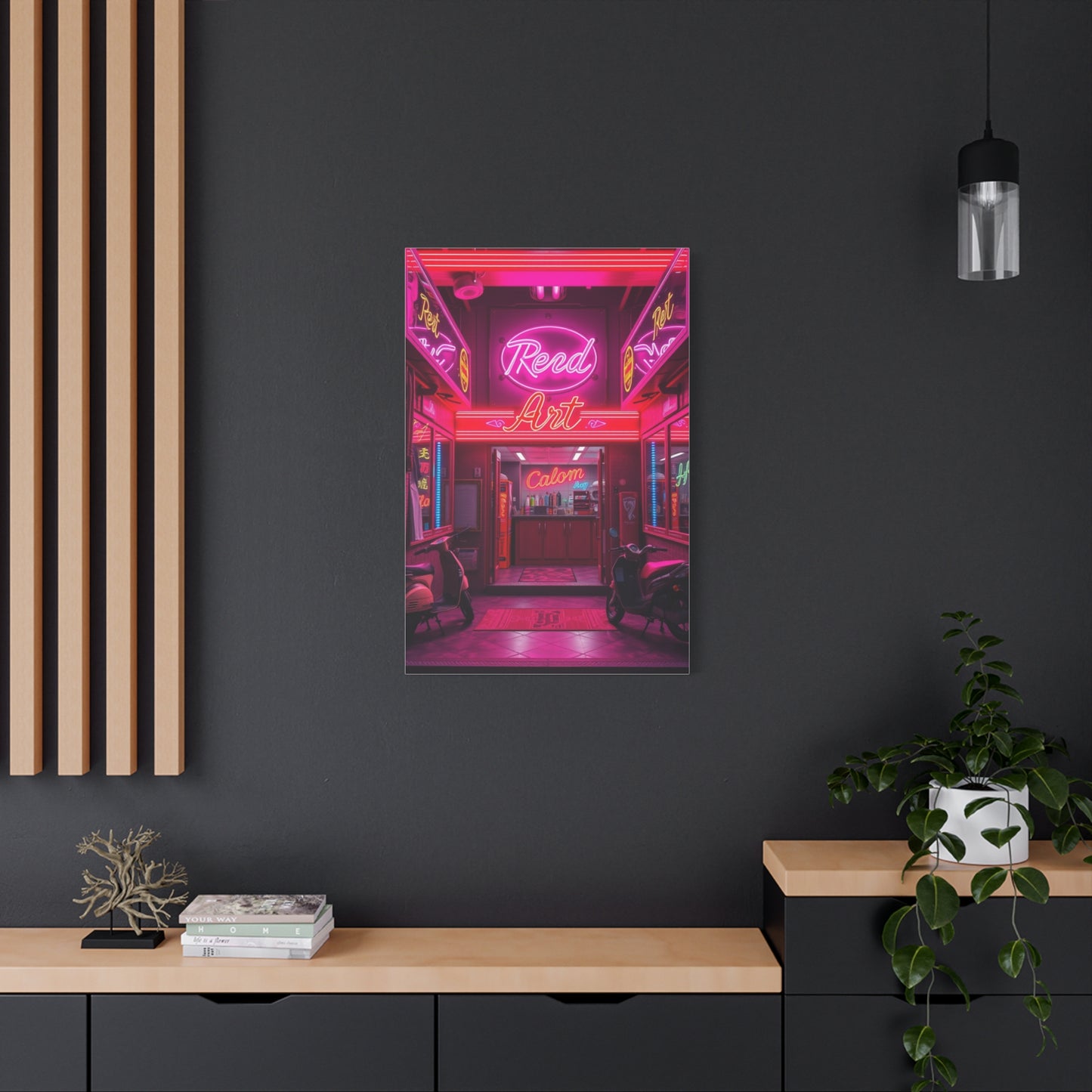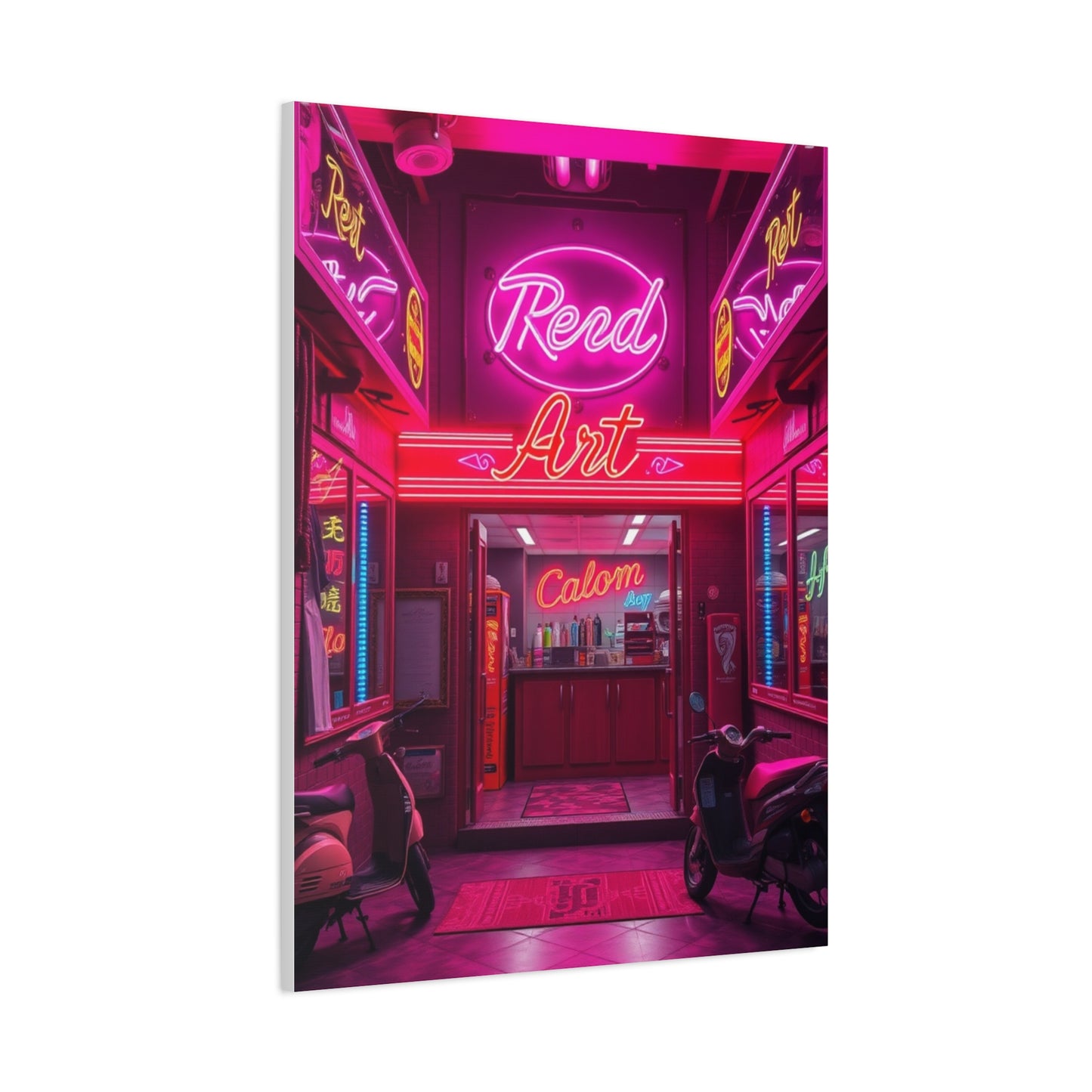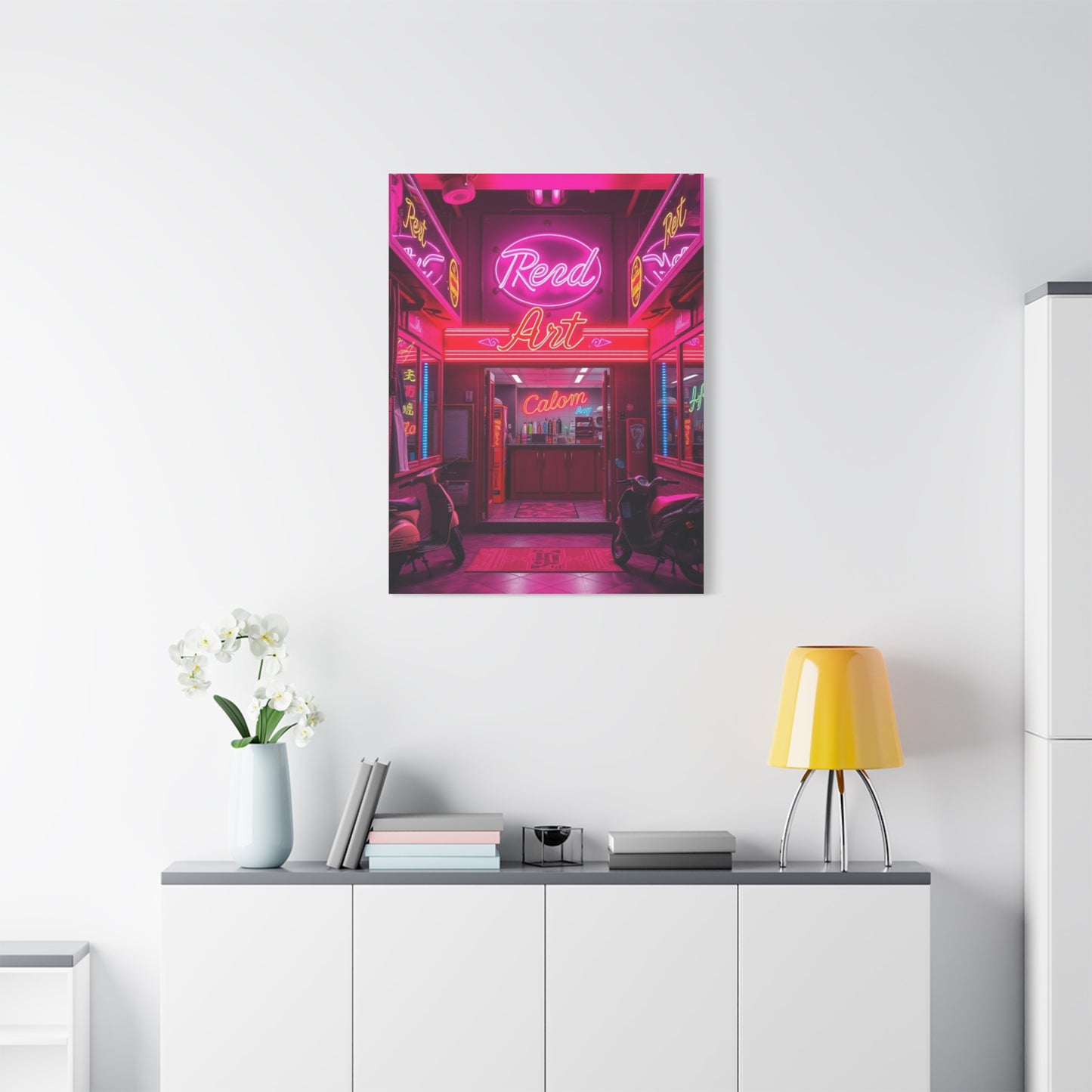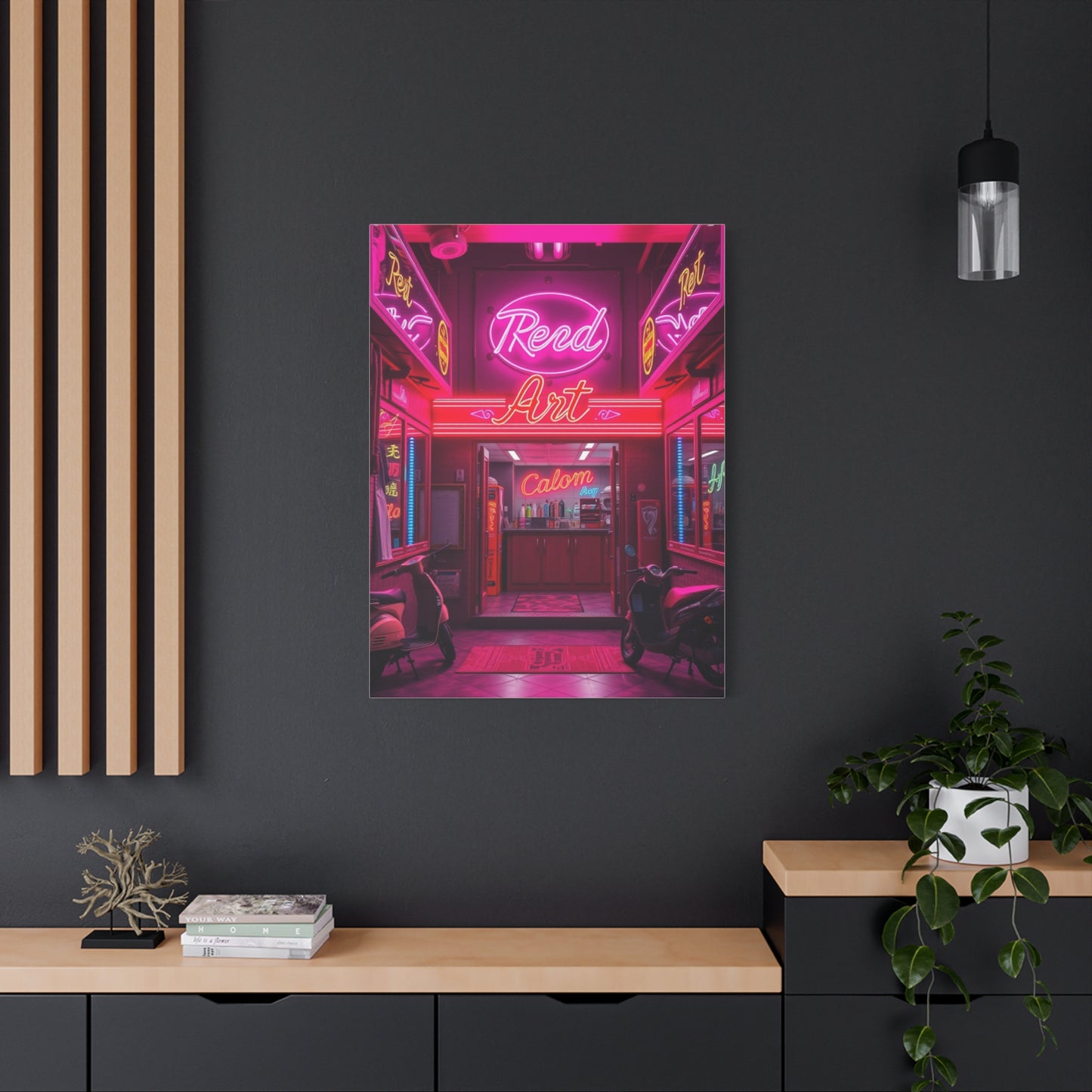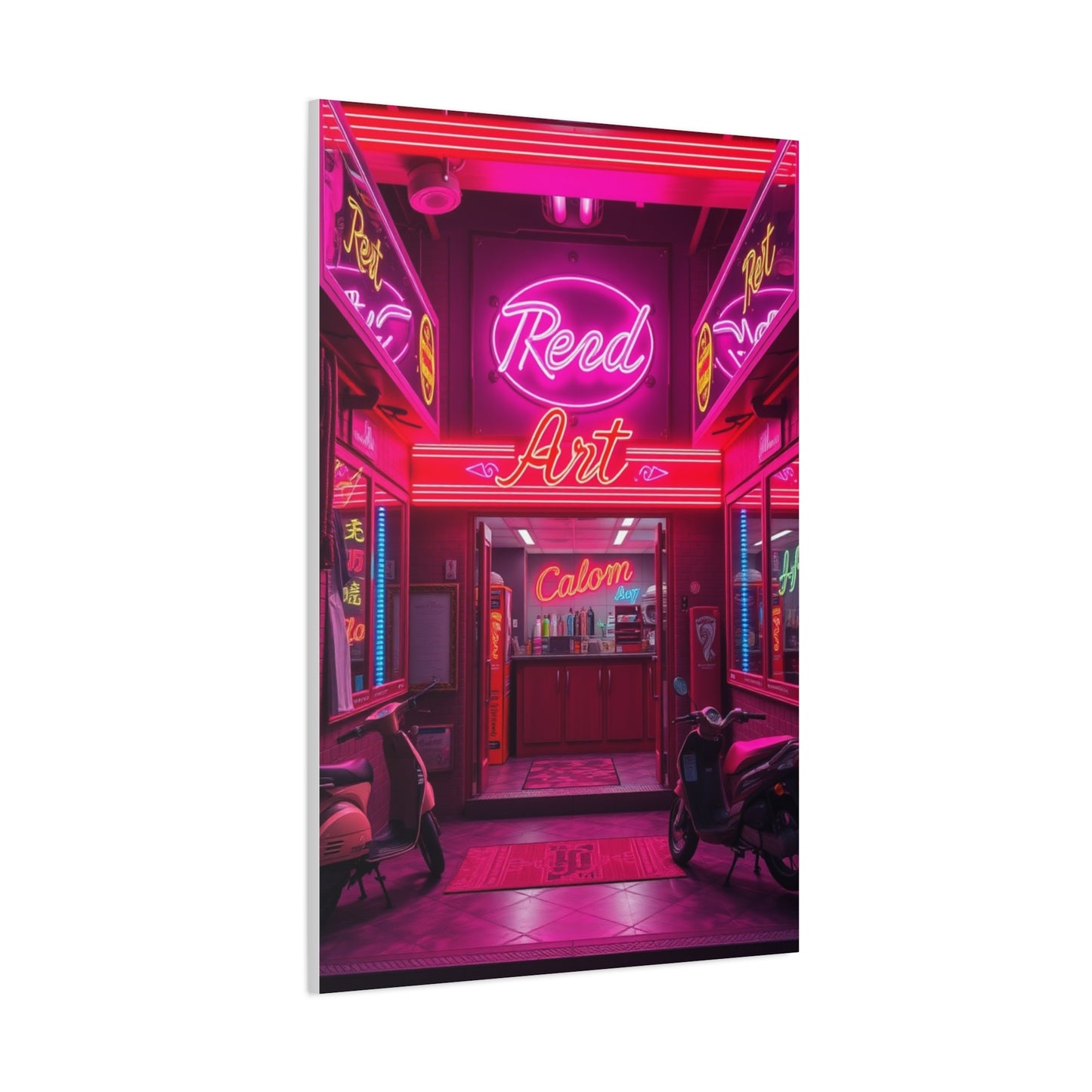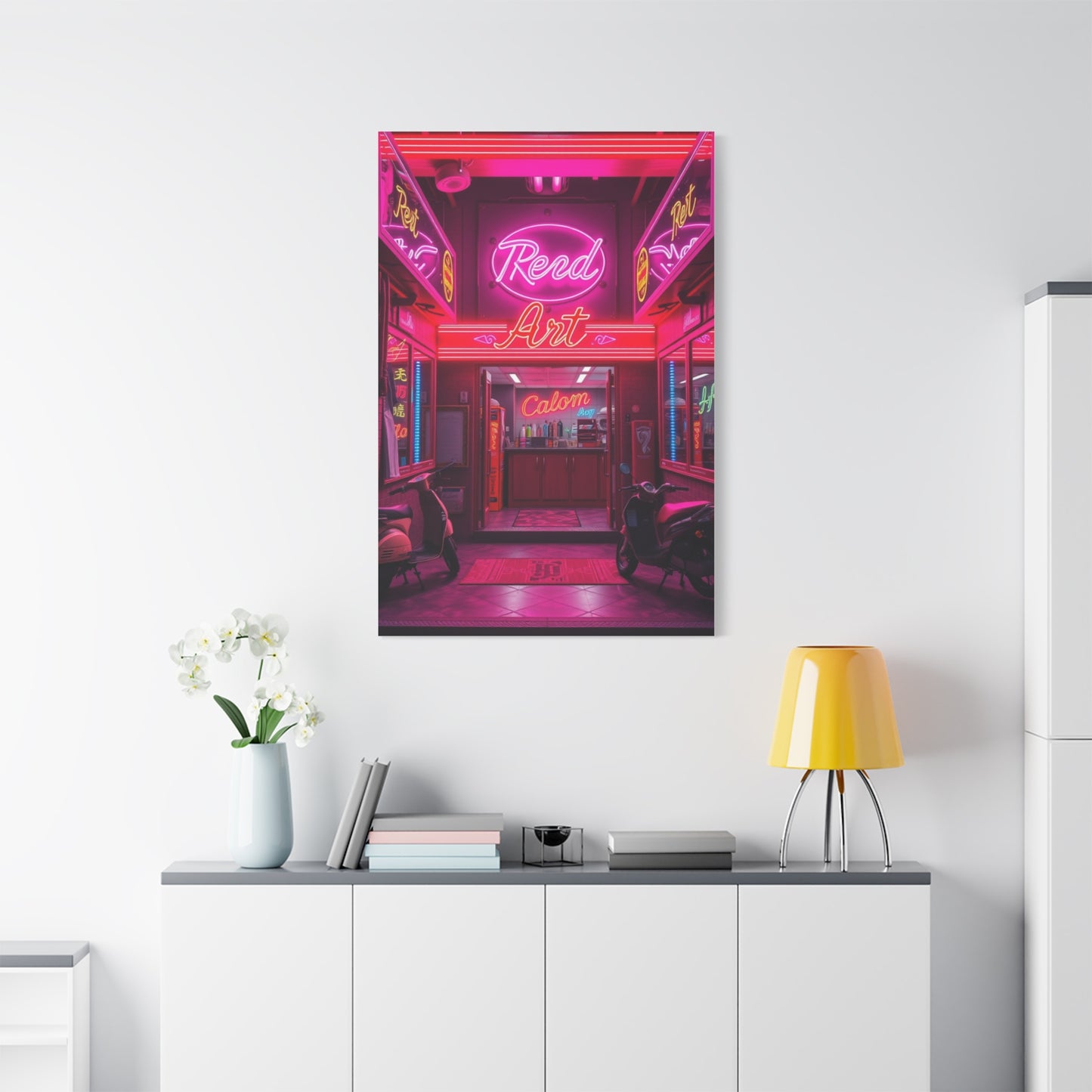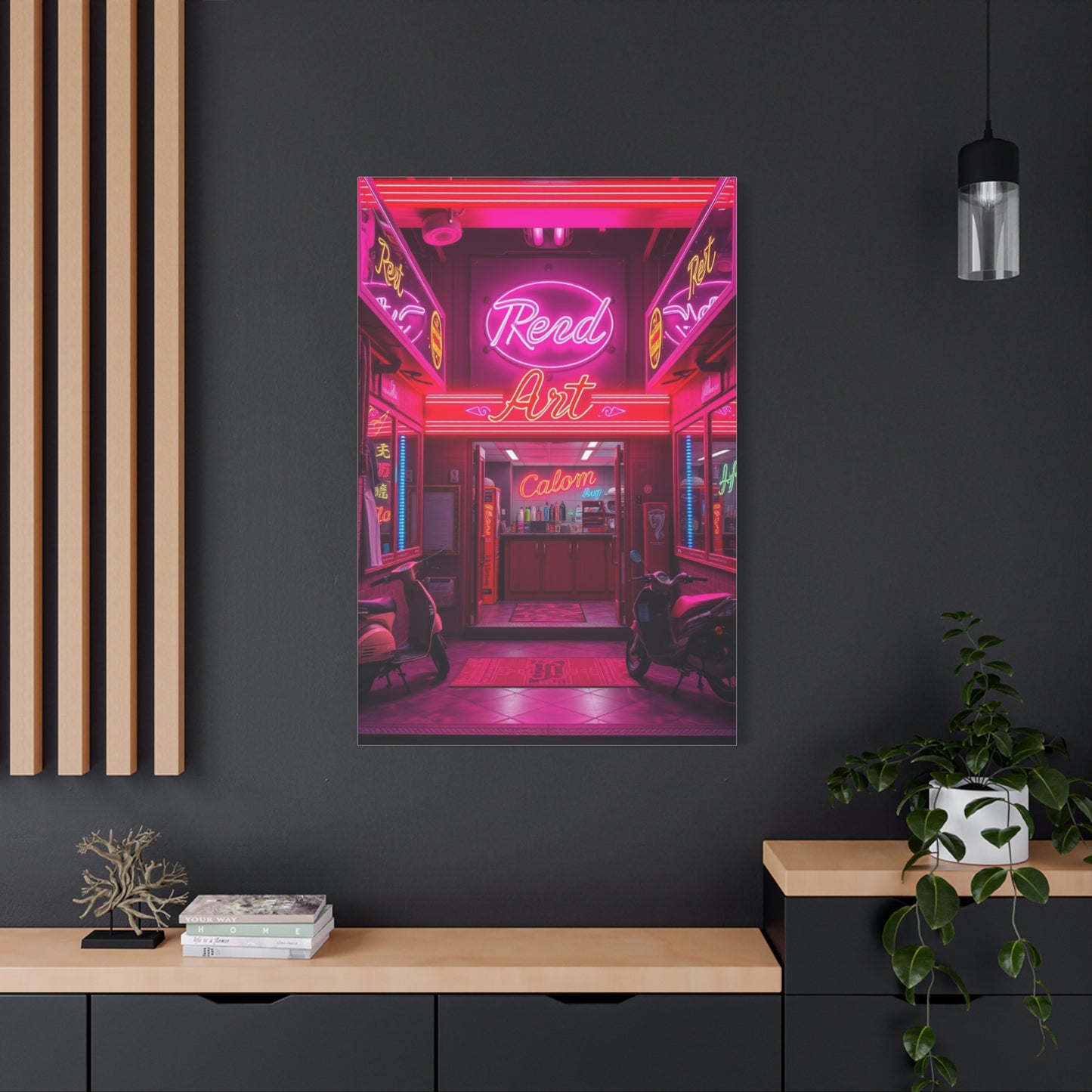Dining in Style: Grandeur Canvas Wall Art for Elegant Dining Spaces
The world of home decoration has witnessed a remarkable resurgence of vintage aesthetics, with retro-grandeur canvas wall art leading this creative revolution. These carefully crafted pieces serve as visual storytelling mediums that transport viewers to bygone eras while seamlessly integrating with contemporary living environments. The appeal of classic-inspired artwork lies in its ability to evoke nostalgia while maintaining relevance in modern decorating schemes, creating atmospheric depth that resonates with homeowners seeking character and distinction.
Canvas prints featuring retro grandeur themes embody a particular artistic philosophy that celebrates the opulence and refinement of previous centuries. Whether drawing inspiration from Victorian elegance, Art Deco glamour, or mid-century modernism, these decorative elements function as focal points that anchor entire rooms. The textured canvas material enhances the vintage quality of these reproductions, lending them an authenticity that flat paper prints cannot match. This tactile dimension adds layers of visual interest that change subtly with lighting conditions throughout the day.
Selecting artwork that captures the essence of historical periods requires understanding the key visual elements that defined those eras. Ornate frames, rich color palettes, classical subject matter, and meticulous attention to detail characterize pieces that successfully channel retro grandeur. These characteristics work together to create compositions that feel simultaneously timeless and specific to their inspirational period. The best examples balance historical accuracy with artistic interpretation, resulting in pieces that honor tradition while speaking to contemporary sensibilities.
Behind Retro-Grandeur Artistic Movements
The foundations of retro-grandeur aesthetics trace back through multiple artistic movements that prioritized visual splendor and technical mastery. The Baroque period introduced dramatic lighting contrasts, emotional intensity, and ornamental abundance that would influence decorative arts for centuries. These characteristics established standards of luxury that continue resonating with modern audiences seeking to inject magnificence into their living environments. The emphasis on craftsmanship and detail during this era created templates that contemporary artists reference when creating vintage-inspired works.
Renaissance ideals of proportion, harmony, and classical references provided another crucial foundation for what we recognize as retro grandeur today. The revival of Greco-Roman themes during this period established visual vocabularies that signified culture, education, and refined taste. These motifs—columns, urns, mythological figures, and architectural elements—became shorthand for sophistication that transcends specific time periods. Modern canvas prints frequently incorporate these established symbols, creating immediate associations with cultural heritage and artistic tradition.
The Victorian era contributed its own distinct flavor to vintage aesthetics, characterized by elaborate ornamentation, rich textures, and eclectic mixing of styles. This period's fascination with exoticism, natural history, and technological progress created diverse visual themes that remain popular in contemporary reproductions. Botanical illustrations, industrial motifs, and romantic landscapes from this era provide endless inspiration for canvas artwork that channels period authenticity. The Victorian approach to layering patterns and accumulating decorative objects also influences how these pieces function within broader decorating schemes.
Art Nouveau and Art Deco movements introduced streamlined elegance and geometric sophistication that expanded definitions of vintage luxury. These early twentieth-century styles balanced ornamentation with modern sensibilities, creating visual languages that feel both historical and forward-thinking. The flowing organic lines of Art Nouveau and the bold geometric patterns of Art Deco offer distinctive aesthetic options for those seeking retro grandeur with more structured compositions. These movements demonstrated that vintage appeal could coexist with contemporary design principles, a lesson that remains relevant for today's decorators.
Palette Selection in Vintage-Inspired Artwork
Color choices fundamentally shape the emotional impact and period authenticity of retro-grandeur canvas prints. Deep jewel tones—emerald greens, sapphire blues, ruby reds, and amethyst purples—immediately evoke the richness associated with historical luxury. These saturated hues were originally derived from expensive pigments and dyes, making them status symbols that signified wealth and refined taste. Contemporary reproductions utilizing these color families tap into centuries of cultural associations, creating instant gravitas and visual weight in any setting.
Metallic accents in gold, silver, copper, and bronze enhance the luxurious quality of vintage-inspired compositions. These reflective elements catch and scatter light, creating dynamic visual experiences that change throughout the day as natural illumination shifts. The use of metallic tones references gilded frames, brocade fabrics, and decorative hardware common in historical settings, strengthening period authenticity. When incorporated thoughtfully, these accents prevent compositions from feeling flat or one-dimensional, adding depth that rewards closer examination.
Muted earth tones and aged patinas contribute authenticity to pieces seeking to replicate the appearance of genuinely antique artworks. Ochres, siennas, umbers, and faded roses create visual warmth while suggesting the passage of time. These subdued palettes work particularly well in settings where dramatic color contrasts might feel overwhelming, offering sophistication through restraint rather than boldness. The weathered quality of these tones can make even newly created pieces feel like treasured discoveries from estate sales or antique markets.
Understanding color temperature proves essential when selecting vintage-inspired canvas prints for specific environments. Warm color schemes featuring reds, oranges, and yellows create inviting, energetic atmospheres appropriate for social areas like dining rooms and gathering areas. Cool palettes dominated by blues, greens, and purples establish calming, contemplative moods suited to private retreats and relaxation zones. The most successful retro-grandeur pieces often balance these temperatures, using warm and cool tones in complementary relationships that create visual harmony and emotional resonance.
Subject Matter and Iconography in Classic Canvas Compositions
Portraiture represents one of the most enduring subjects in vintage-inspired canvas artwork, connecting viewers with the human dimension of historical periods. Formal portraits capturing aristocratic subjects in elaborate dress immediately communicate refinement and social elevation. These figures, frozen in moments of composed dignity, serve as windows into past social structures and values. Contemporary reproductions of portrait styles from various eras allow homeowners to populate their environments with the gravitas of ancestral galleries, even when no actual family connection exists.
Landscape paintings featuring pastoral scenes, romantic ruins, and idealized nature views epitomize another cornerstone of retro-grandeur subject matter. These compositions reflect historical relationships with the natural world, when rural vistas represented escape from urban industrialization. Rolling hills, ancient architecture overtaken by vegetation, and dramatic skies captured in vintage styles evoke longing for simpler times and connection to timeless natural beauty. The technical approaches to rendering these scenes—with carefully layered atmospheric perspective and attention to botanical detail—distinguish them from more casual landscape representations.
Still life arrangements showcasing abundant flowers, exotic fruits, game animals, and precious objects communicate themes of prosperity and appreciation for material beauty. These compositions served historically as demonstrations of artistic skill and celebrations of abundance, functions they continue to fulfill in contemporary settings. The symbolic language embedded in traditional still life paintings—where specific flowers, fruits, and objects carried coded meanings—adds intellectual depth to pieces that might otherwise serve purely decorative functions. Recognizing these historical symbols enriches viewer engagement with seemingly straightforward compositions.
Architectural subjects including grand estates, classical ruins, ornate interiors, and urban monuments provide another rich vein of retro-grandeur imagery. These works satisfy fascination with built environments from previous eras, when construction methods and aesthetic priorities differed dramatically from contemporary approaches. Detailed renderings of elaborate moldings, soaring columns, intricate stonework, and expansive halls transport viewers into worlds of architectural magnificence. For those unable to inhabit such structures, canvas reproductions offer accessible means of surrounding oneself with visual representations of historical grandeur.
Considerations for Canvas Print Quality and Longevity
Canvas material selection significantly impacts both the appearance and durability of finished prints. Premium cotton canvases offer superior texture and archival properties compared to synthetic alternatives, providing surfaces that better replicate traditional painting substrates. The weave pattern of canvas contributes to the overall aesthetic, with finer weaves supporting greater detail reproduction while coarser weaves emphasizing texture and handcrafted qualities. Understanding these material characteristics helps buyers select pieces that will maintain their visual impact over decades rather than years.
Printing technology determines how faithfully digital reproductions capture the subtleties of original artworks. Giclée printing processes using archival pigment inks represent the gold standard for canvas reproductions, offering color accuracy and fade resistance that surpass conventional printing methods. These specialized inks penetrate canvas fibers rather than sitting on surfaces, creating integrated color that resists cracking and peeling over time. The investment in quality printing pays dividends through extended lifespan and maintained visual fidelity that preserves the intended aesthetic impact.
Stretching and mounting techniques affect both the presentation and structural integrity of canvas prints. Gallery-wrapped canvases where the image continues around frame edges create modern, frameless presentations that work well in contemporary settings. Museum-wrapped approaches with neutral borders around stretched pieces accommodate traditional framing while preventing image distortion at edges. Proper tensioning during the stretching process ensures canvases remain taut without warping, maintaining smooth presentation surfaces that don't develop waves or sags over time.
Protective coatings applied to finished canvas prints provide crucial defenses against environmental factors that degrade artwork. UV-resistant varnishes filter harmful light wavelengths that cause fading and color shifts, dramatically extending the effective lifespan of pieces displayed in naturally lit areas. These protective layers also simplify maintenance by creating barriers against dust accumulation and minor moisture exposure. Regular light cleaning with appropriate methods keeps protected canvases looking fresh without requiring intensive restoration work.
Styling Strategies for Incorporating Vintage Canvas Artwork
Creating gallery walls featuring multiple retro-grandeur pieces allows for dynamic storytelling through curated collections. This approach works particularly well when grouping thematically related works—such as botanical illustrations, architectural studies, or portrait collections—that create visual narratives across multiple canvases. The arrangement of pieces within gallery walls requires balancing individual work compositions with overall group symmetry, ensuring each piece receives attention while contributing to the collective impact. Varying frame styles and canvas sizes within cohesive color palettes adds visual interest without creating chaotic impressions.
Symmetrical placement strategies emphasize formality and classical balance appropriate to vintage aesthetics. Positioning identical or similarly sized pieces flanking architectural features like fireplaces, windows, or doorways reinforces structural symmetries already present in rooms. This traditional approach to artwork placement communicates intentionality and careful curation, qualities associated with refined taste and attention to decorative detail. Symmetrical arrangements particularly suit formal entertaining areas where visual order contributes to sophisticated atmospheres.
Asymmetrical compositions offer more relaxed, contemporary alternatives that still accommodate vintage-inspired artwork. These arrangements balance visual weight rather than physical dimensions, creating dynamic equilibriums that draw eyes across compositions. Mixing canvas sizes and orientations within asymmetrical groupings prevents monotony while maintaining cohesive aesthetics through consistent color palettes or thematic connections. This approach works well in casual living areas where rigid formality might feel uncomfortable or pretentious.
Solo statement pieces serve as powerful focal points that anchor entire decorating schemes. Large-scale canvas prints featuring dramatic subjects command attention and establish atmospheric tones that influence all other decorative decisions. Positioning these dominant pieces above significant furniture items—mantels, headboards, or console tables—creates natural visual hierarchies that guide attention throughout environments. The simplicity of single-piece presentations allows intricate details within complex compositions to receive full appreciation without competing elements creating distraction.
Complementary Decorative Elements That Enhance Vintage Artwork
Furniture selection dramatically influences how vintage-inspired canvas artwork integrates into broader decorative schemes. Antique and reproduction pieces featuring carved details, turned legs, and traditional joinery techniques create cohesive relationships with retro-grandeur imagery. The materials common in historical furniture—rich hardwoods, leather upholstery, and brass hardware—echo the material sophistication implied by classic artwork. Even in predominantly contemporary settings, strategically placed traditional furniture pieces can create anchoring points that help vintage artwork feel intentional rather than incongruous.
Textile choices including window treatments, upholstery fabrics, and decorative pillows provide opportunities to reinforce period aesthetics established by canvas artwork. Luxurious materials like velvet, damask, brocade, and silk immediately communicate the tactile richness associated with historical grandeur. Patterns referencing specific periods—Victorian florals, Art Deco geometrics, or Renaissance damasks—strengthen temporal connections between artwork and surrounding environments. Even subtle textile choices like linen weaves and wool textures contribute to overall atmospheric authenticity.
Lighting fixtures function as both practical necessities and aesthetic statements that can either support or undermine vintage artwork presentations. Crystal chandeliers, brass sconces, and reproduction period fixtures naturally complement retro-grandeur canvases, reinforcing historical themes through consistent design language. The quality and color temperature of illumination also matter significantly, with warm-toned lighting enhancing the richness of jewel-toned artwork while preserving atmospheric mood. Directional lighting that highlights specific pieces without creating glare adds professional gallery qualities to residential presentations.
Decorative accessories including mirrors, clocks, candelabras, and sculptural objects create layered visual environments where vintage canvas artwork exists among complementary elements. Ornate mirrors with gilded frames particularly enhance retro-grandeur aesthetics, reflecting light and images in ways that expand perceived dimensions while adding their own decorative impact. Collections of smaller objects displayed on shelving or mantels create opportunities for establishing visual rhythms that echo compositional elements within adjacent artwork. These supporting players prevent artwork from existing in isolation, integrating it into richly developed decorative narratives.
Room-Specific Applications and Placement Considerations
Living rooms and formal sitting areas represent ideal locations for substantial retro-grandeur canvas pieces that establish sophisticated entertaining environments. These semi-public areas benefit from artwork that communicates taste and cultural awareness to guests while creating atmospheres conducive to conversation and relaxation. Positioning statement pieces above seating arrangements ensures visibility from primary viewing angles while maintaining appropriate sight lines that don't require uncomfortable neck positions. The scale of artwork in these settings should correspond to furniture dimensions, with larger pieces anchoring substantial sofas and smaller works complementing individual chairs or accent tables.
Dining environments particularly suit still life compositions featuring abundant food, elaborate table settings, or botanical subjects that complement the room's primary function. Historical precedent strongly supports artwork in dining areas, where paintings traditionally stimulated conversation and demonstrated cultural sophistication. The formal nature of dining rituals aligns naturally with the composed elegance of retro-grandeur aesthetics, creating harmonious relationships between function and decoration. Artwork scale in dining areas should balance prominence with practicality, remaining visible without dominating to the point of distraction during meals.
Private quarters including sleeping chambers and dressing areas offer opportunities for more intimate, personal expressions of vintage aesthetics. Romantic landscapes, serene portraits, and contemplative subjects create atmospheres conducive to rest and reflection appropriate to these private zones. The reduced visibility of bedroom artwork to visitors allows for more experimental or personally meaningful selections that might not suit public areas. Scale considerations in sleeping environments favor slightly smaller, less overwhelming pieces that contribute to restful rather than stimulating atmospheres.
Libraries, studies, and home offices benefit from retro-grandeur artwork that reinforces intellectual pursuits and concentrated work. Architectural studies, historical maps, scientific illustrations, and portrait collections of notable figures create environments that feel serious and scholarly. These working environments can accommodate busier, more detail-rich compositions that reward extended viewing during work breaks. The traditional association between private libraries and art collections makes these locations particularly appropriate for vintage-inspired pieces that might feel overly formal in more casual areas.
Transitional areas including entryways, hallways, and stairwells present unique opportunities and challenges for vintage canvas placement. These circulation zones offer brief viewing opportunities as people move through them, favoring bold, immediately impactful pieces over subtle, detail-dependent works. Narrow hallways can become productive gallery settings when treated as linear exhibition spaces with regularly spaced artwork creating visual rhythm along their lengths. Stairwell walls, often neglected in decorating schemes, provide excellent vertical surfaces for arranging collections of related pieces that unfold gradually as viewers ascend or descend.
Sourcing Authentic and Reproduction Vintage Artwork
Online marketplaces specializing in vintage and reproduction artwork offer vast selections that would be impossible to encounter through physical shopping alone. These digital platforms allow filtering by period, subject matter, color palette, and size, helping buyers efficiently narrow options to pieces matching specific requirements. The convenience of browsing extensive inventories from home enables thoughtful decision-making without the pressure of in-person sales environments. However, online purchases require careful attention to seller reputation, return policies, and detailed product specifications to ensure satisfaction with pieces that may look different in person than on screens.
Physical galleries and art fairs provide tactile experiences that reveal canvas texture, color accuracy, and scale relationships impossible to fully appreciate through digital images. Interacting directly with artwork allows examination of printing quality, frame construction, and finishing details that significantly impact overall presentation. Gallery staff can often provide valuable context about artistic techniques, historical references, and styling recommendations based on extensive experience. The investment of time required for physical gallery visits pays dividends through increased confidence in purchasing decisions and opportunities to discover unexpected pieces that might not surface in online searches.
Custom commissioning services enable creation of perfectly tailored pieces matching specific dimensional requirements, color schemes, or thematic preferences. Working with artists or printing services to develop custom vintage-inspired canvases ensures perfect integration with existing decorative schemes. This approach particularly suits challenging architectural features like unusually proportioned walls or uniquely shaped alcoves where standard-sized artwork would fit awkwardly. The premium costs associated with custom work reflect the additional labor and personalized attention involved, but result in singular pieces unlikely to appear in other homes.
Estate sales, antique markets, and secondhand stores occasionally yield authentic vintage pieces or older reproductions that have developed genuine patinas of age. These discovery-oriented shopping experiences appeal to those who enjoy the hunt for hidden treasures and the stories that accompany genuinely old objects. Acquiring artwork through these channels requires more expertise in authenticating age and assessing condition, but can result in more distinctive collections at lower costs than retail reproductions. The unpredictable inventory at these sources makes systematic searching impossible, favoring flexible buyers who can adapt their vision to accommodate unexpected discoveries.
Historical Imagery in Modern Living
Surrounding oneself with visual references to historical periods provides psychological anchoring in an era of rapid change and uncertainty. Retro-grandeur artwork creates visual stability through references to established aesthetic traditions that have demonstrated enduring appeal across generations. This connection to continuity can feel comforting for those experiencing the disorienting effects of contemporary technological and social acceleration. The presence of historically-grounded imagery establishes temporal depth in environments that might otherwise feel disconnected from the past.
Vintage-inspired artwork satisfies deep human needs for beauty and craftsmanship in increasingly mass-produced, utilitarian environments. The evident skill and attention to detail in classical compositions provide welcome contrast to disposable consumer goods and rushed production timelines. Viewing artwork that clearly required substantial time, expertise, and care to create offers respite from the superficiality that characterizes much contemporary visual culture. This appreciation for demonstrated mastery connects viewers to traditions of skilled craft that predate industrial manufacturing.
The aspirational dimension of retro-grandeur aesthetics allows people to surround themselves with visual representations of refinement and cultural sophistication regardless of actual social position. Historically, access to fine art and elaborate decoration served as markers of privilege and status unavailable to most people. Contemporary reproduction technology democratizes these aesthetics, enabling anyone to create environments previously restricted to aristocratic settings. This aspirational function satisfies desires for elegant surroundings without requiring inherited wealth or social position.
Nostalgia for periods never personally experienced represents another psychological appeal of vintage-inspired artwork. These pieces allow imaginative transportation to romanticized versions of historical eras, selectively emphasizing their aesthetic pleasures while conveniently omitting their hardships and limitations. This selective nostalgia provides emotional satisfaction without requiring actual rejection of contemporary comforts and conveniences. The ability to enjoy vintage aesthetics while retaining modern amenities represents an ideal synthesis for many people.
Maintenance and Preservation of Canvas Artwork
Regular dusting using soft, dry cloths or feather dusters prevents accumulation of particulates that can dull canvas surfaces and settle into weave textures. This simple maintenance task, performed weekly or biweekly, dramatically extends the periods between more intensive cleanings. Light pressure during dusting prevents inadvertent damage to canvas surfaces or disturbing of protective coatings. Establishing consistent cleaning routines as part of regular household maintenance prevents neglect that allows more difficult-to-remove soiling to develop.
Humidity control proves critical for canvas preservation, as excessive moisture promotes mold growth while insufficient humidity causes brittleness and cracking. Maintaining relative humidity between forty and sixty percent protects canvas materials and printed inks from moisture-related degradation. In climates with extreme humidity variations, supplemental humidification or dehumidification equipment may be necessary to maintain optimal conditions. Monitoring devices provide ongoing feedback about environmental conditions, alerting owners to situations requiring intervention before damage occurs.
Temperature stability prevents expansion and contraction cycles that stress canvas materials and mounting hardware. Avoiding placement near heating vents, radiators, fireplaces, or exterior walls subject to significant temperature fluctuations protects artwork from thermal damage. The ideal temperature range for canvas preservation falls between sixty-five and seventy-five degrees Fahrenheit, matching comfortable human occupancy ranges that make special climate control unnecessary in most settings. Consistent temperatures prove more important than specific absolute values, as repeated cycling causes greater cumulative damage than stable conditions outside ideal ranges.
Professional conservation services become necessary when damage exceeds what routine maintenance can address. Tears, significant fading, water damage, or structural issues with stretcher frames require specialized expertise to repair properly. Consulting with conservation professionals before attempting DIY repairs prevents well-intentioned efforts from causing additional damage. The investment in professional conservation protects the monetary and sentimental value of significant pieces, ensuring they remain viable for future generations.
Cultural Influences on Vintage Aesthetic Preferences
European artistic traditions dominate many conceptions of retro grandeur, reflecting the continent's lengthy history of aristocratic patronage and academic art institutions. French Rococo elegance, Italian Renaissance mastery, Dutch Golden Age realism, and British portraiture traditions each contributed distinctive approaches to classical beauty. These national styles developed unique characteristics while sharing fundamental commitments to technical excellence and aesthetic refinement. Contemporary reproductions often draw eclectically from multiple European traditions, creating hybrid aesthetics that reference broadly "classical" or "vintage" qualities rather than specific national schools.
American interpretations of vintage aesthetics often emphasize frontier romanticism, folk art traditions, and the eclecticism of Victorian-era decoration. Colonial revival styles celebrating early American furniture and decorative arts influence contemporary vintage preferences in ways distinct from European aristocratic references. The American tendency toward mixing formal European influences with more casual folk traditions creates unique hybrid aesthetics. This cultural context shapes how American audiences interpret and incorporate vintage-inspired artwork into their living environments.
Asian artistic traditions offer alternative vintage aesthetics featuring different compositional principles, subject matter, and philosophical foundations. Japanese ukiyo-e prints, Chinese landscape scrolls, and Islamic geometric patterns represent rich historical traditions with their own devoted contemporary followings. When incorporated into Western settings, these traditions create cross-cultural fusion aesthetics that expand definitions of vintage beyond exclusively European references. The growing appreciation for diverse historical traditions enriches available aesthetic vocabularies for those seeking alternatives to conventional retro-grandeur imagery.
The globalization of aesthetic preferences through digital media exposes contemporary audiences to vintage styles from cultures they might never physically encounter. This unprecedented access to world art history allows eclectic borrowing from multiple traditions simultaneously. The resulting aesthetic mashups would have been impossible in previous eras when cultural isolation limited awareness of distant artistic traditions. Contemporary vintage-inspired artwork increasingly reflects this globalized awareness, creating pieces that reference multiple cultural sources within individual compositions.
Vintage-Inspired Art Markets
Price stratification in canvas print markets reflects quality variations in materials, printing techniques, and artistic licensing. Budget-tier reproductions utilize synthetic canvases and conventional printing methods, offering accessible entry points for cost-conscious buyers willing to accept limited longevity. Mid-range options typically feature cotton canvases and improved ink quality, balancing affordability with enhanced durability. Premium products employ archival materials and giclée printing, commanding higher prices justified by superior quality and extended lifespans. Understanding these tiers helps buyers make informed decisions matching their priorities and budgets.
Original vintage artwork commands premium prices reflecting scarcity, historical significance, and authenticated provenance. Genuine antique paintings from recognized artists or periods represent substantial investments accessible primarily to wealthy collectors and institutions. The high costs associated with authentic historical pieces make quality reproductions appealing alternatives for those seeking vintage aesthetics without investment-grade expenditures. This market dynamic sustains demand for reproduction artwork that captures the appearance of originals at fractions of their costs.
Licensing arrangements for reproductions of museum-held masterworks add complexity to vintage artwork markets. Institutions holding famous works often license high-quality reproduction rights, generating revenue while making their collections accessible to broader audiences. These officially licensed reproductions typically cost more than unauthorized alternatives but offer assurances of color accuracy and quality control. The ethical and legal implications of unauthorized reproductions create considerations beyond simple price comparisons for conscientious buyers.
Resale markets for vintage-inspired canvas prints remain relatively undeveloped compared to original artwork markets. Reproductions generally experience significant value depreciation after initial purchase, functioning more as consumable home goods than appreciating investments. Exceptions exist for limited-edition reproductions or pieces from significant commercial artists, but most canvas prints should be purchased for personal enjoyment rather than investment potential. This market characteristic encourages buying decisions based on aesthetic preferences rather than speculation about future value.
Advances in Reproduction Accuracy
Digital photography and scanning technologies enable unprecedented accuracy in capturing original artwork for reproduction purposes. High-resolution imaging captures minute details invisible to unaided human vision, allowing reproductions to exceed the visual information available in casual original viewing. Advanced color management systems ensure printed reproductions match original hues with precision impossible through traditional reproduction methods. These technological capabilities mean contemporary reproductions can rival or exceed the quality of reproductions created through earlier photomechanical processes.
Three-dimensional scanning technologies capture surface textures and brushstroke relief from original paintings, information that can be incorporated into premium reproductions. This textural data allows printers to replicate not just visual appearance but also tactile qualities of original paintings. The resulting reproductions exhibit dimensionality that flat printing cannot achieve, more convincingly replicating the experience of viewing actual paintings. These advanced reproduction techniques blur boundaries between originals and copies in ways that challenge traditional assumptions about artistic authenticity.
Artificial intelligence applications in image processing enable sophisticated enhancement and restoration of damaged or degraded original artworks. Machine learning algorithms can intelligently fill missing information, remove artifacts from aged paintings, and optimize color balance for contemporary printing technologies. These capabilities allow creation of reproductions that represent idealized versions of originals rather than literal copies of their current states. The ethical implications of this technological capability generate ongoing debates about reproduction authenticity and appropriate uses of digital manipulation.
Print-on-demand technologies enable economically viable production of individual custom pieces without requiring minimum order quantities. This manufacturing flexibility supports both mass-market standardized products and personalized commissioned work through the same production infrastructure. The elimination of inventory costs and warehousing requirements reduces barriers to entry for small-scale reproduction businesses. This democratization of production capabilities contributes to the abundance and variety of vintage-inspired artwork available to contemporary consumers.
Environmental Considerations in Canvas Production and Display
Sustainable material sourcing addresses environmental impacts of canvas production by utilizing organic cotton, recycled polyester, or alternative plant-based fibers. These eco-conscious materials reduce agricultural chemical use, water consumption, and petroleum dependence compared to conventional materials. Certifications from environmental organizations provide verification of sustainability claims, helping conscientious buyers identify genuinely responsible products. The modest premium costs for sustainable materials reflect additional production expenses while supporting agricultural and manufacturing practices with reduced environmental footprints.
Water-based and eco-solvent ink formulations minimize volatile organic compound emissions compared to traditional solvent-based printing inks. These environmentally preferable inks reduce health risks for production workers and indoor air quality impacts for end users. Performance characteristics of modern eco-friendly inks rival conventional alternatives, eliminating previous trade-offs between environmental responsibility and product quality. The ongoing development of bio-based inks derived from renewable resources promises further environmental improvements in coming years.
Energy efficiency in production facilities reduces the carbon footprint associated with canvas manufacturing and printing operations. Solar installations, LED lighting, and optimized climate control systems lower operational energy consumption. Some manufacturers pursue carbon-neutral certification through renewable energy usage and offset programs. These institutional commitments to environmental responsibility respond to consumer demand for products aligned with sustainability values while reducing operational costs through improved efficiency.
End-of-life considerations for canvas artwork remain challenging, as mixed materials complicate recycling. Wooden stretcher frames can typically be reclaimed through standard wood recycling streams, but canvas and ink combinations often require specialized processing unavailable in municipal systems. Encouraging reuse through secondhand markets and donation programs extends product lifespans, delaying disposal while making artwork accessible to additional users. The development of fully recyclable or compostable canvas products represents an ongoing challenge for environmentally conscious manufacturers.
The Role of Vintage Aesthetics in Contemporary Design Movements
Maximalist design philosophies embrace abundant decoration and layered visual complexity that naturally accommodates vintage-inspired artwork. This approach rejects minimalist restraint in favor of rich, personality-filled environments where retro-grandeur pieces contribute to overall atmospheric abundance. Maximalist settings provide contexts where elaborate vintage artwork feels perfectly at home rather than incongruously formal. The movement's celebration of personal expression and collected objects over designer uniformity creates ideal conditions for incorporating diverse vintage-inspired pieces.
Eclectic style mixing combines elements from multiple periods and traditions, often anchoring these diverse assemblages with statement vintage artwork. This approach requires confident curatorial vision to prevent chaotic results, using consistent color palettes or repeated motifs to unify disparate elements. Vintage canvas pieces often serve as starting points for eclectic rooms, establishing color schemes and atmospheric tones that guide subsequent decorating decisions. The flexibility of eclectic approaches accommodates both subtle nods to historical periods and more dramatic vintage statements.
Modern traditional design synthesizes classical elements with contemporary simplicity, creating refined environments that feel simultaneously timeless and current. This increasingly popular approach uses vintage-inspired artwork to inject character and warmth into otherwise clean-lined contemporary settings. The contrast between ornate classical imagery and simple modern furnishings creates dynamic visual tension that prevents either element from becoming monotonous. This balanced approach appeals to those seeking vintage character without committing to fully period-accurate historical recreation.
Grandmillennial aesthetics, popularized by younger generations embracing traditionally "granny" decorating elements, demonstrate renewed appreciation for vintage refinement. This movement reclaims chintz fabrics, needlepoint, and formal portraiture previously dismissed as outdated, celebrating their craftsmanship and character. Retro-grandeur canvas artwork aligns perfectly with grandmillennial sensibilities, providing the historical gravitas and decorative richness central to the style. The movement's playful approach to tradition encourages mixing serious vintage pieces with contemporary irreverence, preventing results from feeling stuffy or overly precious.
Psychological Effects of Color and Pattern in Historical Artwork
Warm color dominance in many vintage compositions creates psychologically inviting environments that encourage social interaction and emotional openness. Reds, oranges, golds, and warm browns stimulate conversation and appetite, making them traditionally popular for dining and entertaining areas. The physiological effects of warm colors include increased heart rate and perceived temperature elevation, contributing to energized rather than relaxed atmospheres. Understanding these psychological impacts helps match vintage artwork to intended room functions and desired emotional responses.
Cool color palettes featuring blues, greens, and purples promote calm, contemplative moods appropriate for private retreats and concentration-intensive activities. These hues lower perceived temperatures and heart rates, creating psychologically soothing environments. Historical artwork utilizing predominantly cool palettes suits sleeping chambers, meditation areas, and studies where mental focus benefits from reduced stimulation. The cultural associations between blue tones and aristocratic reserve reinforce the sophisticated restraint communicated by cool-palette vintage pieces.
Pattern density and complexity influence cognitive engagement levels and perceived visual rest. Busy, ornate vintage compositions demand attention and reward extended viewing, making them appropriate for areas where mental stimulation is welcome. Simpler compositions with larger areas of visual rest create less demanding viewing experiences suitable for environments prioritizing relaxation. Balancing pattern complexity across multiple pieces in shared viewing areas prevents either visual monotony or overwhelming busy-ness.
Symmetry and asymmetry within compositions trigger different psychological responses related to order and dynamism. Symmetrical vintage compositions communicate stability, formality, and classical balance that feels reassuring and authoritative. Asymmetrical arrangements create visual movement and energy, appearing more dynamic and less conventional. These compositional choices influence how viewers engage with artwork and the broader environments containing it, subtly shaping emotional responses to domestic settings.
Framing Options and Presentation Methods for Canvas Prints
Traditional ornate frames featuring gilded finishes, carved details, and substantial profiles naturally complement retro-grandeur artwork by extending period aesthetics beyond canvas boundaries. These elaborate frames function as decorative elements in their own right, contributing significantly to overall visual impact. The weight and craftsmanship evident in quality traditional frames communicate seriousness and permanence, elevating the perceived importance of artwork they surround. Frame selection requires balancing prominence with harmony, ensuring frames enhance rather than overshadow the artwork they contain.
Contemporary minimalist frames featuring simple profiles and neutral finishes create interesting contrasts with vintage imagery. This approach allows classical content to stand out through juxtaposition with modern framing simplicity. Thin metal or wood frames in black, white, or natural finishes prevent distraction while providing finished edges and protective structure. The modern framing approach works particularly well in eclectic settings where mixing period references creates intentional stylistic friction.
Gallery-wrapped presentations where images continue around canvas edges eliminate framing entirely, creating clean contemporary presentations. This frameless approach suits modern traditional aesthetics where vintage content mixes with simplified contemporary elements. The exposed canvas edges and visible stretcher bars communicate casual artistry and workshop authenticity. Gallery wrapping works best with compositions designed to accommodate edge continuation, as important elements near boundaries may become less visible when wrapped around stretcher frames.
Floating frame systems suspend canvases within slightly larger frames, creating dimensional shadows that add visual interest. This hybrid approach provides frame structure and protection while maintaining the contemporary simplicity of minimal borders. The gap between canvas edges and frame interiors creates subtle depth that draws attention while preventing the heaviness associated with traditional frame contact. Floating presentations suit transitional design schemes that balance traditional and contemporary elements.
Creating Cohesive Collections Across Multiple Rooms
Thematic consistency across different room artwork creates residential continuity while allowing individual area customization. Establishing overarching themes—such as botanical subjects, architectural studies, or portrait collections—provides unifying threads that make homes feel curated rather than randomly assembled. Individual rooms can explore theme variations suited to their specific functions while maintaining connection to the broader decorative narrative. This approach satisfies desires for both unity and variety, preventing monotonous repetition while avoiding chaotic eclecticism.
Color palette coordination ensures visual harmony as people move between adjacent areas with different artwork. Identifying dominant and accent colors that repeat across multiple pieces creates subtle connections that please aesthetically without requiring identical imagery. This technique allows diverse subject matter while maintaining cohesive overall impressions. Color coordination proves particularly important in open-plan layouts where multiple areas share visual connections and artwork from different zones appears simultaneously in sightlines.
Scale progressions from public to private areas create intuitive hierarchies matching the social importance of different zones. Larger, more impressive pieces in entries and formal areas establish initial grandeur, while progressively smaller works in private zones feel appropriately intimate. This spatial storytelling through artwork scale guides visitors through homes while creating varied viewing experiences. The technique requires planning entire home artwork schemes rather than approaching rooms in isolation.
Stylistic evolution across areas allows exploration of different vintage periods or artistic movements while maintaining overall classical orientation. Perhaps formal areas feature Renaissance-inspired works while private quarters explore Art Nouveau aesthetics, all unified by shared commitment to historical reference and technical quality. This approach creates journeys through art historical periods as people move through homes, providing visual variety that rewards exploration. The technique demands sufficient knowledge of artistic movements to group pieces meaningfully rather than creating confused mixtures.
The Influence of Social Media on Vintage Aesthetic Popularity
Digital platforms showcase vintage-inspired environments to unprecedented global audiences, creating viral trends that rapidly shift decorating preferences. Particular vintage styles gain sudden popularity when influential accounts feature them, driving demand for specific aesthetic elements. This phenomenon accelerates trend cycles while democratizing access to decorating inspiration previously limited to professional publications. The visual nature of platforms particularly suits sharing striking vintage artwork in carefully styled settings, making these pieces featured elements in aspirational content.
Hashtag communities organized around vintage aesthetics create knowledge-sharing networks where enthusiasts exchange styling tips and source recommendations. These digital spaces foster collective expertise development and community identity around shared aesthetic preferences. The accessibility of these communities contrasts with previous eras when decorating knowledge was expensive.
Conclusion:
In conclusion, grandeur canvas wall art holds a transformative power that can elevate any dining space into an elegant haven of style and sophistication. Dining rooms are more than just places to eat—they are gathering spots for conversation, celebration, and connection. The art you choose for these spaces significantly influences the atmosphere, mood, and overall experience. Grandeur canvas art, with its majestic themes, rich textures, and commanding presence, offers the perfect way to infuse your dining area with a sense of luxury and timeless beauty.
When selecting canvas art for your dining space, it’s important to consider the scale and style of both the artwork and the room itself. Large, bold pieces can serve as striking focal points that draw guests’ eyes and spark conversation. Intricate details and lavish color palettes—such as deep golds, royal blues, or rich burgundies—can complement fine dining settings, crystal chandeliers, and elegant table settings, weaving a cohesive narrative of opulence and grace. Whether you favor classical motifs, baroque-inspired designs, or contemporary interpretations of grandeur, these elements can harmonize with your space to create an immersive and inviting environment.
Beyond aesthetics, grandeur canvas wall art also helps define the character of your dining room. It can evoke feelings of warmth and intimacy or foster an air of celebration and festivity. The right piece can subtly influence how diners perceive the space, encouraging relaxation, engagement, or even a sense of awe. Art that incorporates textures—such as layered brushstrokes or mixed media—adds depth and tactile richness, making the wall come alive and enhancing the sensory experience of dining.
Lighting is another critical factor in showcasing grandeur canvas art. Soft, warm lighting can amplify the richness of colors and details, while strategically placed spotlights or sconces can accentuate the texture and focal points of the artwork. Coordinating your lighting design with the art will maximize its impact and ensure your dining space feels both inviting and luxurious throughout the day and evening.
Finally, the selection of grandeur canvas art for dining spaces is a reflection of personal taste and lifestyle. It offers an opportunity to express your love of culture, history, or modern elegance while creating a space where memorable meals and meaningful moments unfold. Whether your style leans toward traditional grandeur or contemporary chic, these canvases bring an undeniable sense of refinement and artistry to your dining environment.
In essence, grandeur canvas wall art is more than just decoration—it is a catalyst for ambiance, a statement of style, and a celebration of life’s most cherished gatherings. By carefully choosing pieces that resonate with your vision, you can craft an elegant dining space that invites joy, sophistication, and lasting memories.

















